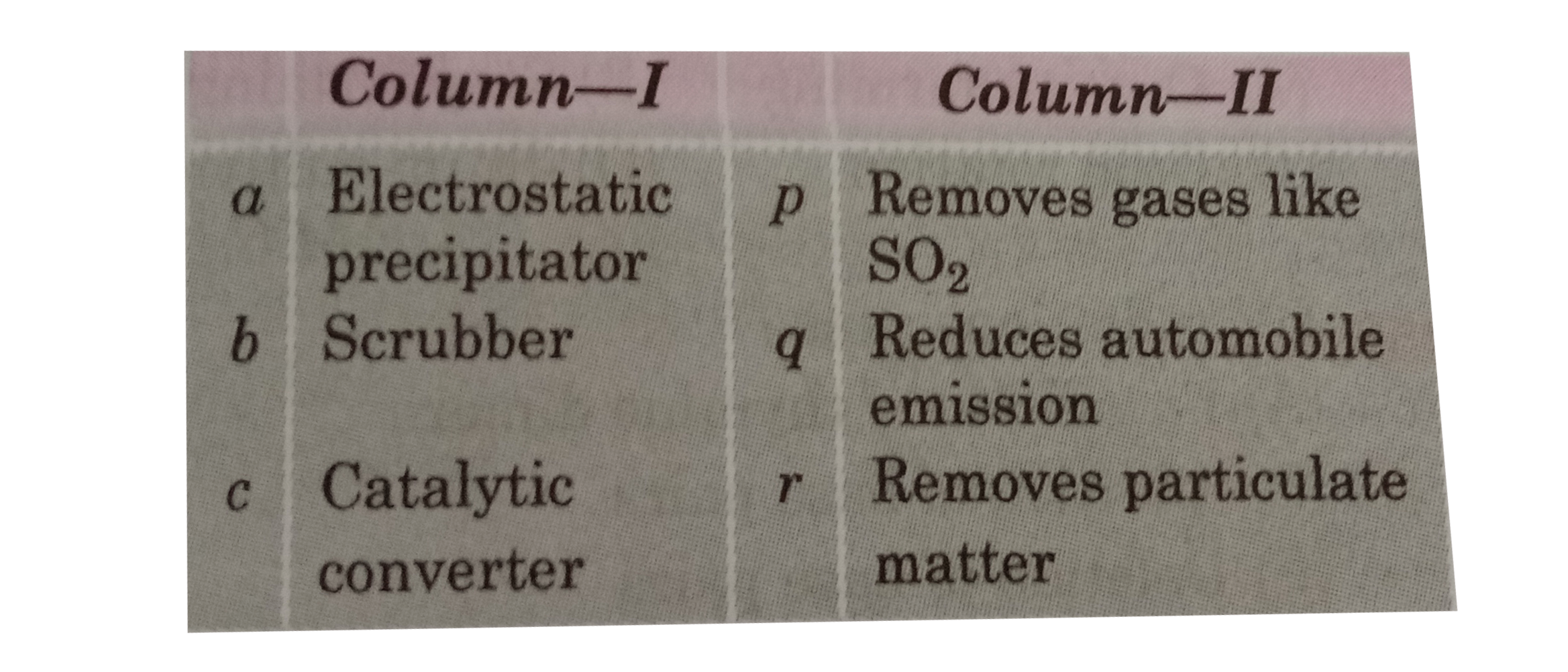Match the columns and find out the correct combination
Column IColumnIIaTreponema(i)PlaguebYersinia pestis(ii)AnthraxcBacillus anthracis(iii)SyphilisdVibro(iv)Cholera
(a)-(i),(b)-(iii),(c )-(ii),(d)-(iv)
(a)-(iii),(b)-(i),(c )-(ii)-,(d)-(iv)
(a)-(iv),(b)-(iii),( c)-(i),(d)-(ii)
(a)-(ii),(b)-(iii),( c )-(i), (d)-(iv)
The correct Answer is:B
To solve the matching question, we need to identify the correct combinations between the organisms in Column I and the diseases they cause in Column II. Let's go through each item step by step.
1. Identify the first organism: Treponema (a)
- Treponema is known to cause syphilis, which is a sexually transmitted infection.
- Therefore, the match is: (a) Treponema - (iii) Syphilis.
2. Identify the second organism: Yersinia pestis (b)
- Yersinia pestis is the bacterium responsible for causing the plague.
- Therefore, the match is: (b) Yersinia pestis - (i) Plague.
3. Identify the third organism: Bacillus anthracis (c)
- Bacillus anthracis is known to cause anthrax, which can be deadly to livestock and humans.
- Therefore, the match is: (c) Bacillus anthracis - (ii) Anthrax.
4. Identify the fourth organism: Vibrio (d)
- Vibrio is associated with causing cholera, which is an acute diarrheal illness.
- Therefore, the match is: (d) Vibrio - (iv) Cholera.
Summary of Matches:
- (a) Treponema - (iii) Syphilis
- (b) Yersinia pestis - (i) Plague
- (c) Bacillus anthracis - (ii) Anthrax
- (d) Vibrio - (iv) Cholera
Final Combination:
The correct combination is:
- A - iii
- B - i
- C - ii
- D - iv
Thus, the answer is:
- Option 2: A (iii), B (i), C (ii), D (iv).
- Treponema is known to cause syphilis, which is a sexually transmitted infection.
- Therefore, the match is: (a) Treponema - (iii) Syphilis.
- Yersinia pestis is the bacterium responsible for causing the plague.
- Therefore, the match is: (b) Yersinia pestis - (i) Plague.
- Bacillus anthracis is known to cause anthrax, which can be deadly to livestock and humans.
- Therefore, the match is: (c) Bacillus anthracis - (ii) Anthrax.
- Vibrio is associated with causing cholera, which is an acute diarrheal illness.
- Therefore, the match is: (d) Vibrio - (iv) Cholera.
- (a) Treponema - (iii) Syphilis
- (b) Yersinia pestis - (i) Plague
- (c) Bacillus anthracis - (ii) Anthrax
- (d) Vibrio - (iv) Cholera
The correct combination is:
- A - iii
- B - i
- C - ii
- D - iv
- Option 2: A (iii), B (i), C (ii), D (iv).
Topper's Solved these Questions
- KINGDOM MONERA (THE PROKARYOTES)BOOK - DINESH PUBLICATION ENGLISHCHAPTER - KINGDOM MONERA (THE PROKARYOTES)EXERCISE - CHECK YOUR GRASP
20 Videos
- KINGDOM MONERA (THE PROKARYOTES)BOOK - DINESH PUBLICATION ENGLISHCHAPTER - KINGDOM MONERA (THE PROKARYOTES)EXERCISE - CHECK YOUR GRASP
20 Videos
- KINGDOM FUNGI-MULTICELLULAR DECOMPOSERSBOOK - DINESH PUBLICATION ENGLISHCHAPTER - KINGDOM FUNGI-MULTICELLULAR DECOMPOSERSEXERCISE - CYG
19 Videos
- KINGDOM PLANTAE OR METAPHYTA BOOK - DINESH PUBLICATION ENGLISHCHAPTER - KINGDOM PLANTAE OR METAPHYTA EXERCISE - CYG
20 Videos
Similar Questions
Match the columns I,II and III and find correct options

View SolutionCompare the columns and find out the correcrt combination Column IColumn II(a)Tridax(i)synandrous(b)Dolichos(ii)Monadelphous(c)Ceiba(iii)Syngenedious(d)Cucurbita(iv)Polyadephous(v)Diadelphouse
View SolutionMatch the following and select the correct combination.
Column IColumn IIA.Red algae(i)MarchantiaB.Liver wort(ii)PinusC.Walking fern(iii)PolysiphoniaD.Gymnosperm(iv)Adiantum
View SolutionMatch the items of column I and Column II and select the correct combination

View SolutionMatch items of column I with thoses of column II and choose the correct combinations
Column IColumnIIaPneumonia(p)Vibro choleraebCitrus Canker(q)Mycobacterium lepraecCholera(r)Yersinia pestisdLeprosy(s)Xanthomonas citri(t)Diplococcus pneumoniae
View SolutionMatch the columns and find the correct combination
(a)Ptyalin (i)Lipids(b)Pepsin(ii)Starch(c)Steapsin(iii)DNA(d)Nuclease(iv)Protien
View SolutionMatch the columns and find the correct combination III(a)Hypotonic (i)Water(b)Hypertonic(ii)Sucrose(c)Solute(iii)Lower tonicity(d)Solvent(iv)Higher tonicity
View SolutionFind the correct match.
Column IColumn II(a)Brachysclereids(i)Rod cells(b)Macrosclereids(ii)Girt cells(c)Bast fibres(iii)Cotton fibers(d)Asterosclereids(iv)Nelumbo
View SolutionMatch the columns and find the correct combination Column IColumn IIaGanong's Potometer (i)Rate of growthbCobalt chloride paper (ii)Rate of transpirationcPfeffer's auxanometer (iii)Differential transpiration dPorometer(iv)Opening and closing of stomata
View SolutionMatch the columns I and II, and choose the correct combination from the options given.
Column IColumn IIi.Spongea.Monoeciousii.Leechb.Dioeciousiii.Cockroachc.Hermaphroditeiv.Frogd.Unisexualv.Date plame.Bisexual
View Solution
